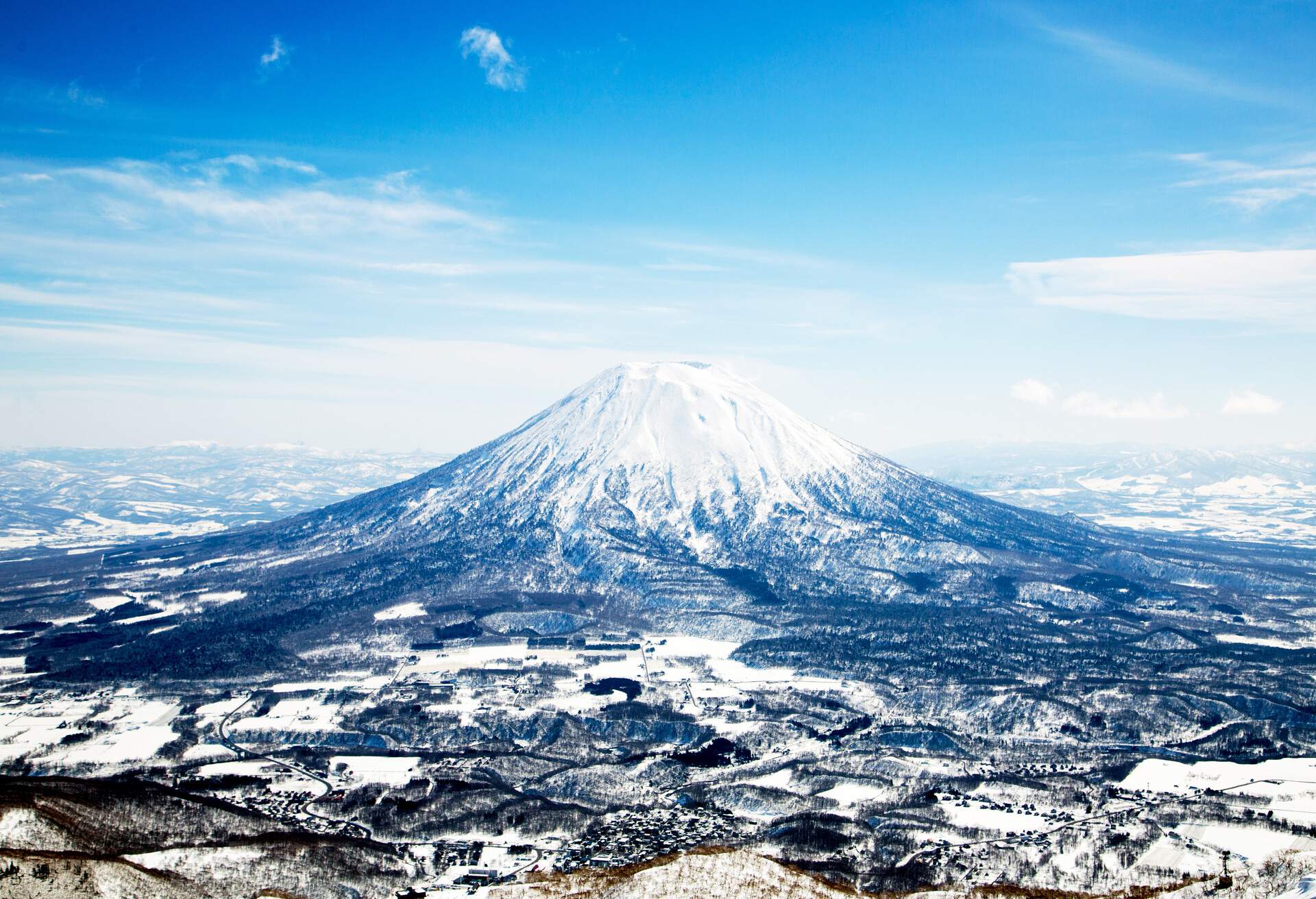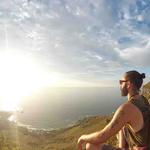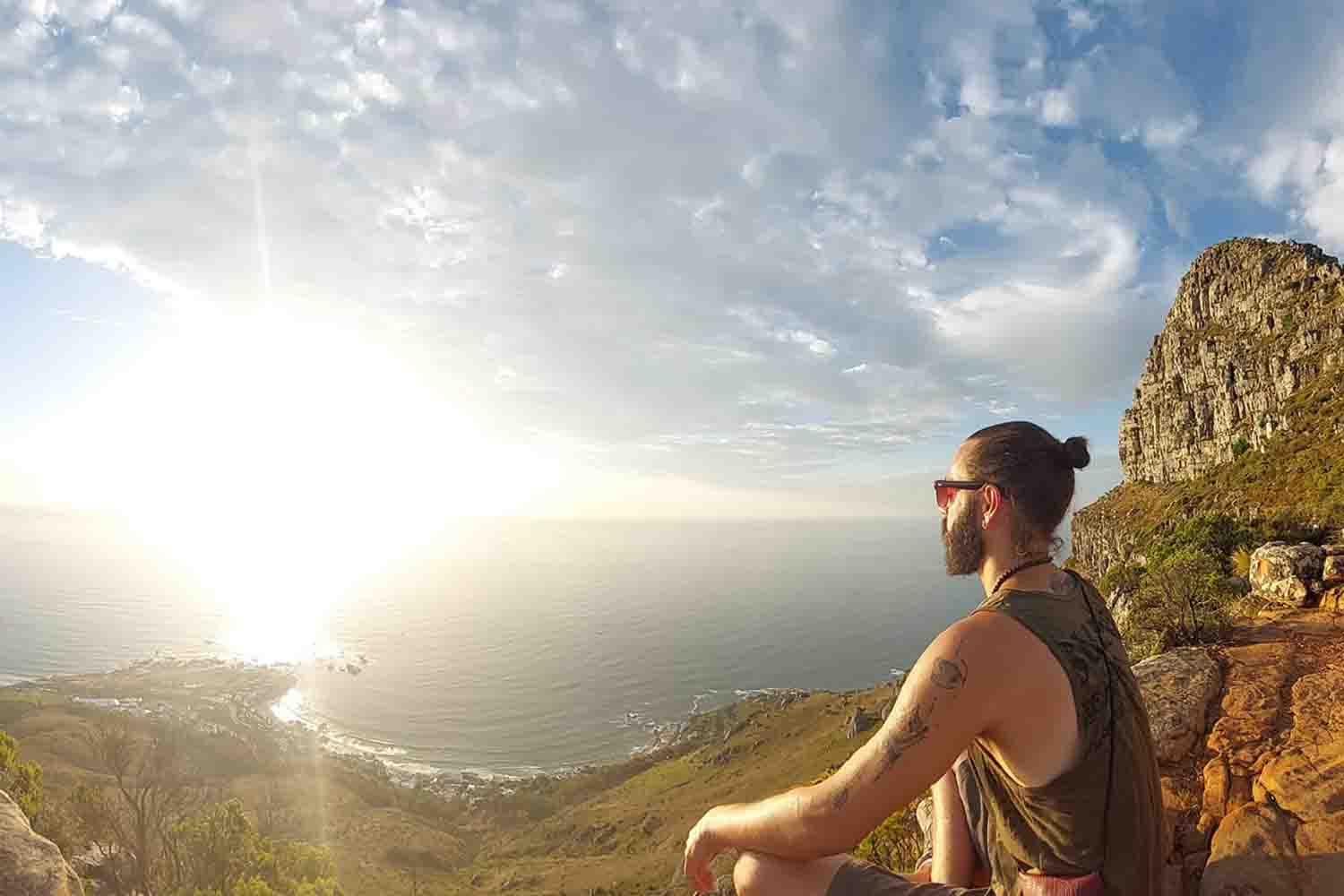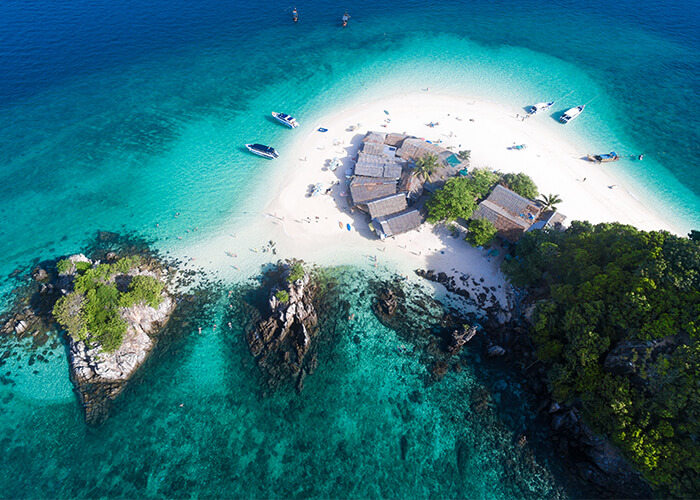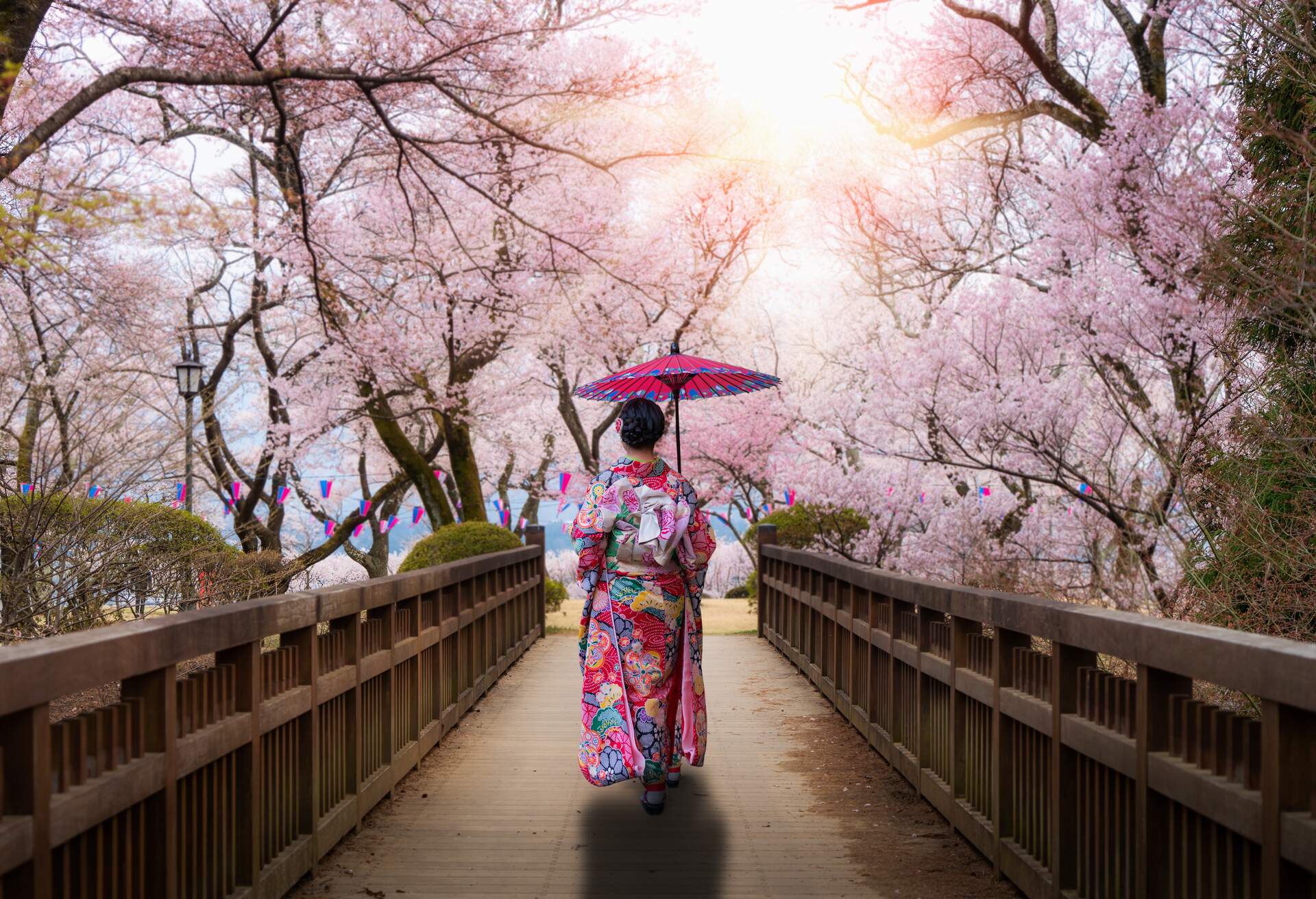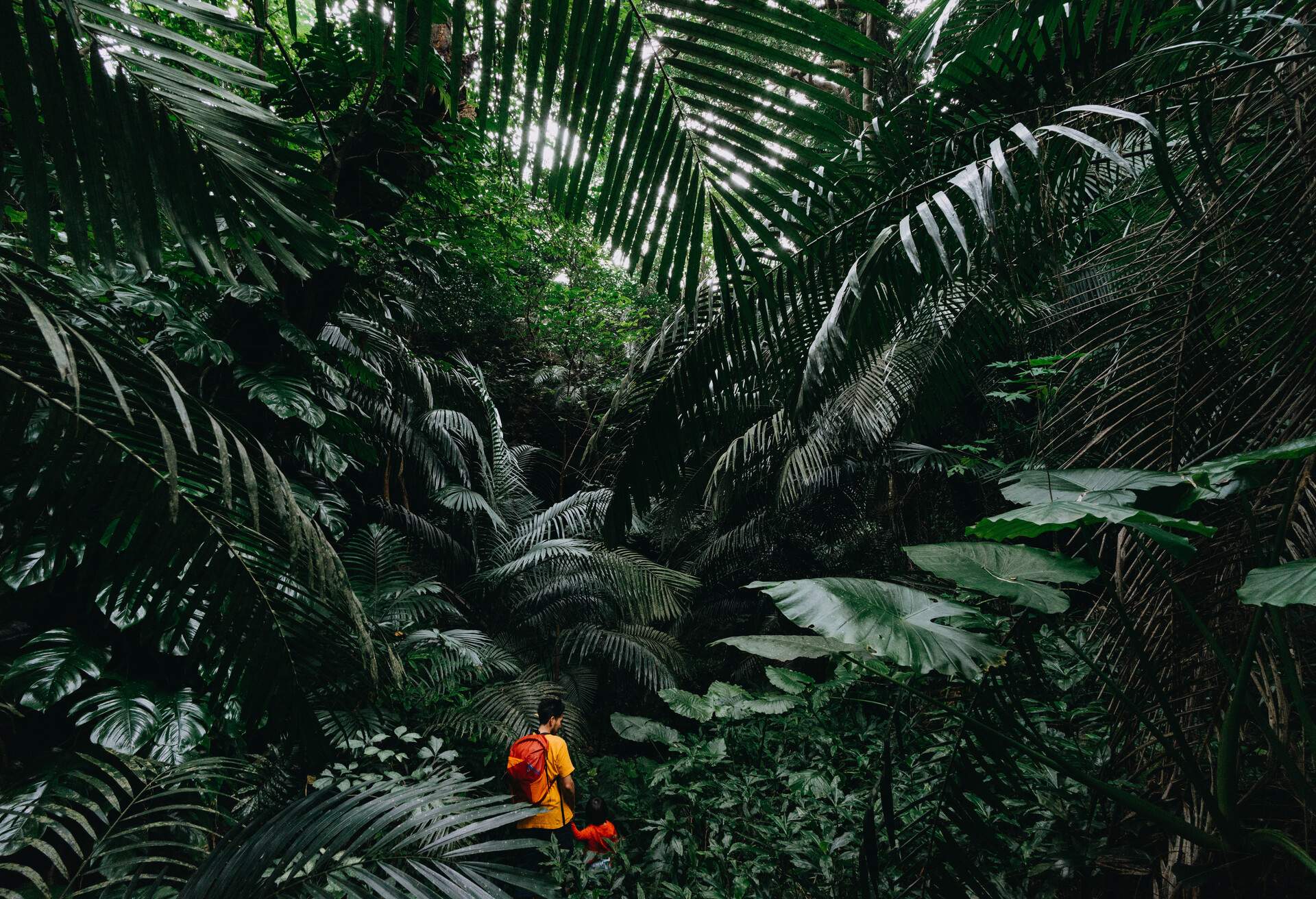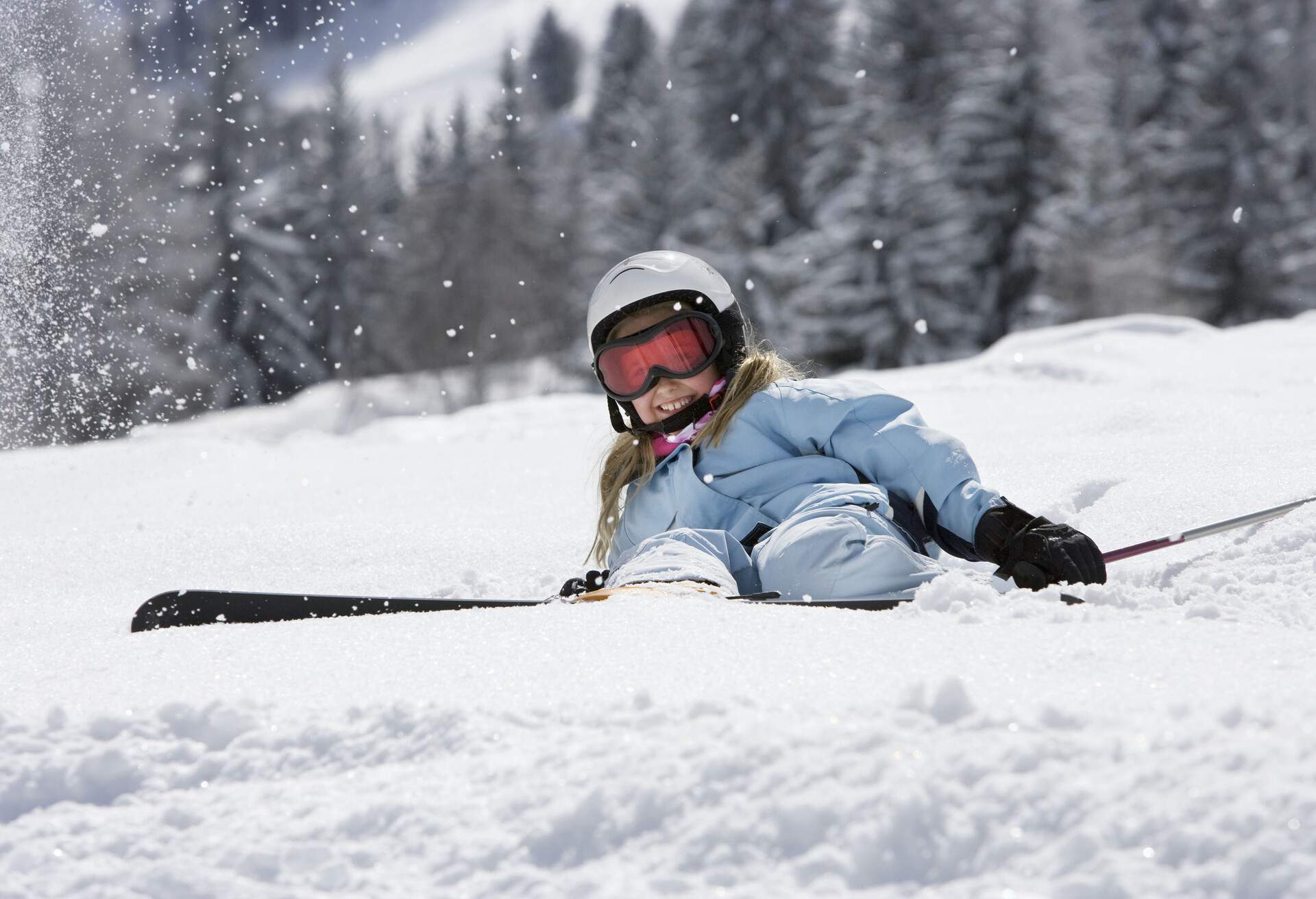When most people think of Japan, they think of things like cutting-edge technological advances, bullet trains, incredible temples, cherry blossoms, sushi, exotic cuisine and funky-looking temples. For people in the know, however, skiing in Japan is one of the best things about the country. It snows more in Japan than anywhere else in the world, and this abundance of snow means an abundance of exhilarating peaks. With more than 450 operating ski resorts all over Japan, it’s hard to nail down the best resorts. This list, however, is one of the most comprehensive guides to the best resorts in Japan, including an explanation of the best time of year to visit and what sort of traveller each is most suited to.
What’s the best time to ski in Japan?
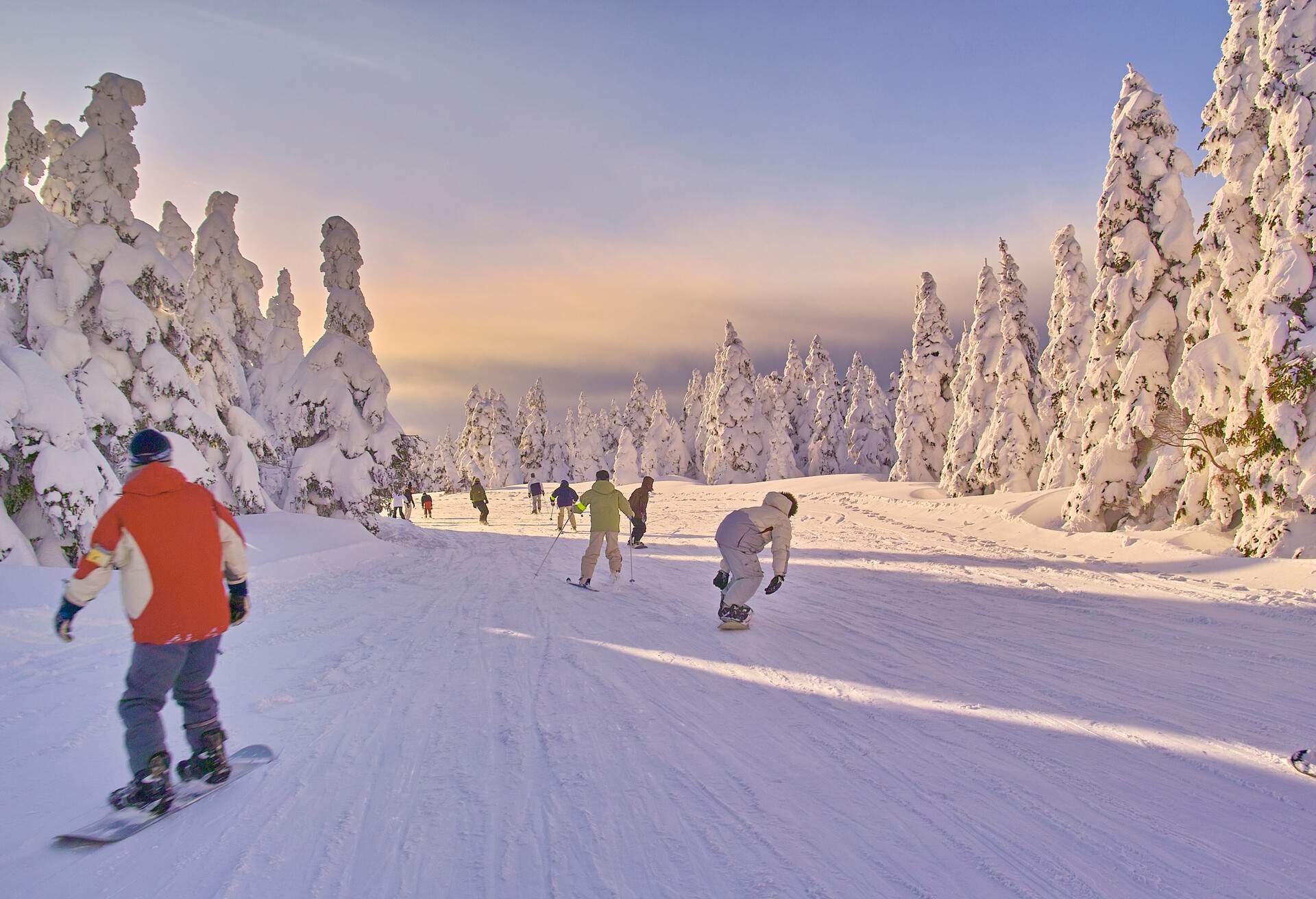
The ideal time to have your ski holiday in Japan depends on what you’re looking for. If you’re looking for the ideal snow conditions with tons of powder and a possibility of skiing every day, make sure you plan your trip between mid-January and early February, but avoid the 5th of February if possible. There can be close to 100 inches of snowfall during these months, offering some of the most incredible skiing possible. The 5th of February is Chinese New Year and tons of tourists flock to the country on holiday, swamping the slopes and harshing the vibes, if you’re not into crowds, that is.
If you’re looking for warmer temperatures and slightly cheaper lodging, have a look at booking your holiday between late March and the end of April. There isn’t much chance of deep powder during these months, but the cherry blossoms start to bloom and there’s ample powder on the slopes for a gentle ski.
Top tips when skiing in Japan
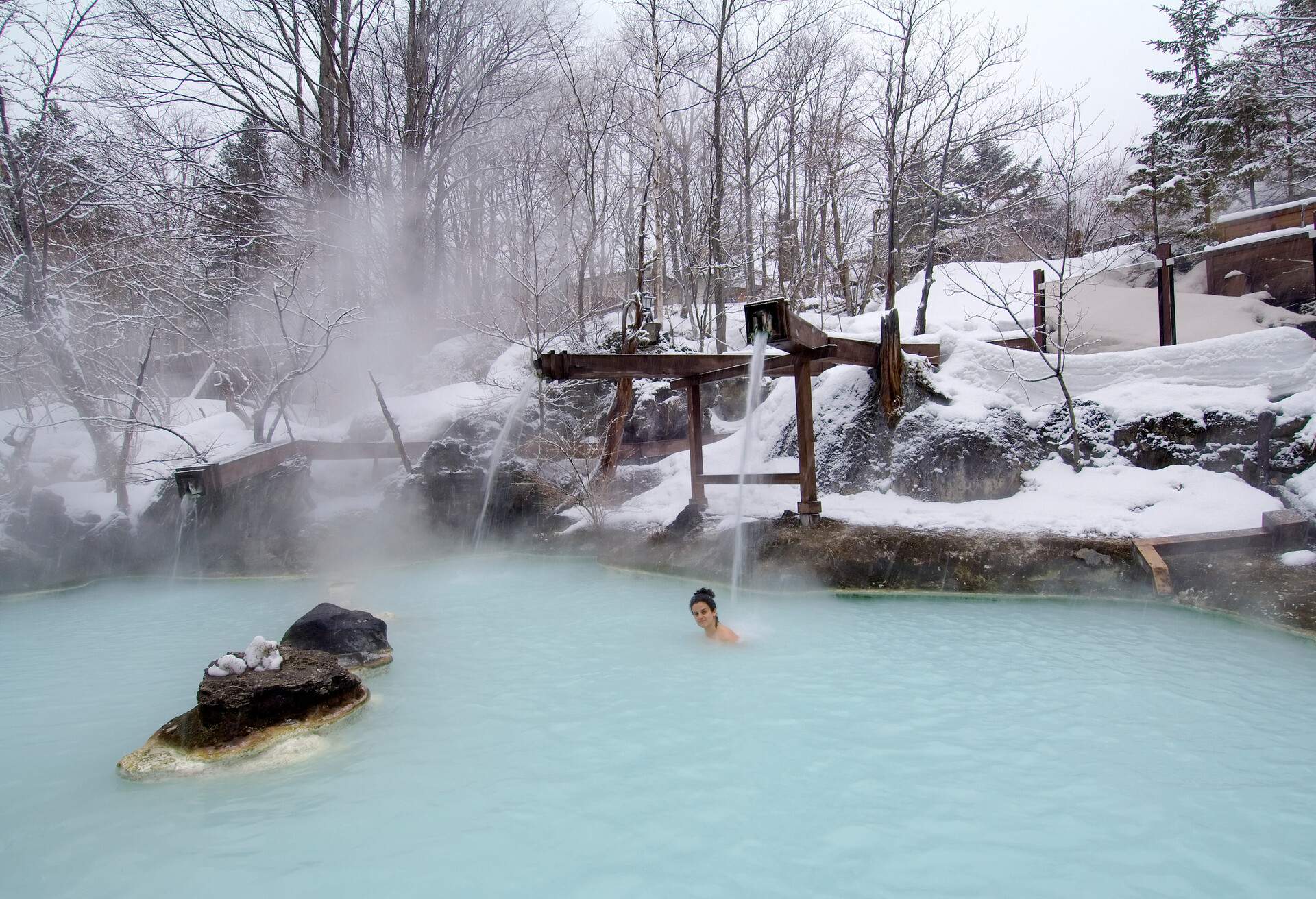
One of the main tips, especially if you want to make the most out of your trip and get the best runs, is to ski with a guide. Having a guide eliminates the need to figure any of the details out. When you’re skiing in Japan, you want to make the most of every run, and having a guide is the best way to do that. Make sure you choose a guide that speaks English if you’re not fluent in Japanese.
Next, don’t be shy about exploring the customs, enjoying Japanese cuisine and immersing yourself in the culture. One thing to know about Japanese people is, they love to see foreigners trying to experience life the way they experience it. Learn a few phrases, get involved and have fun with your trip. Onsens, hot springs, are a popular attraction around the ski resorts, but there is some etiquette involved, so read up before you jump in.
Best ski resorts in Japan
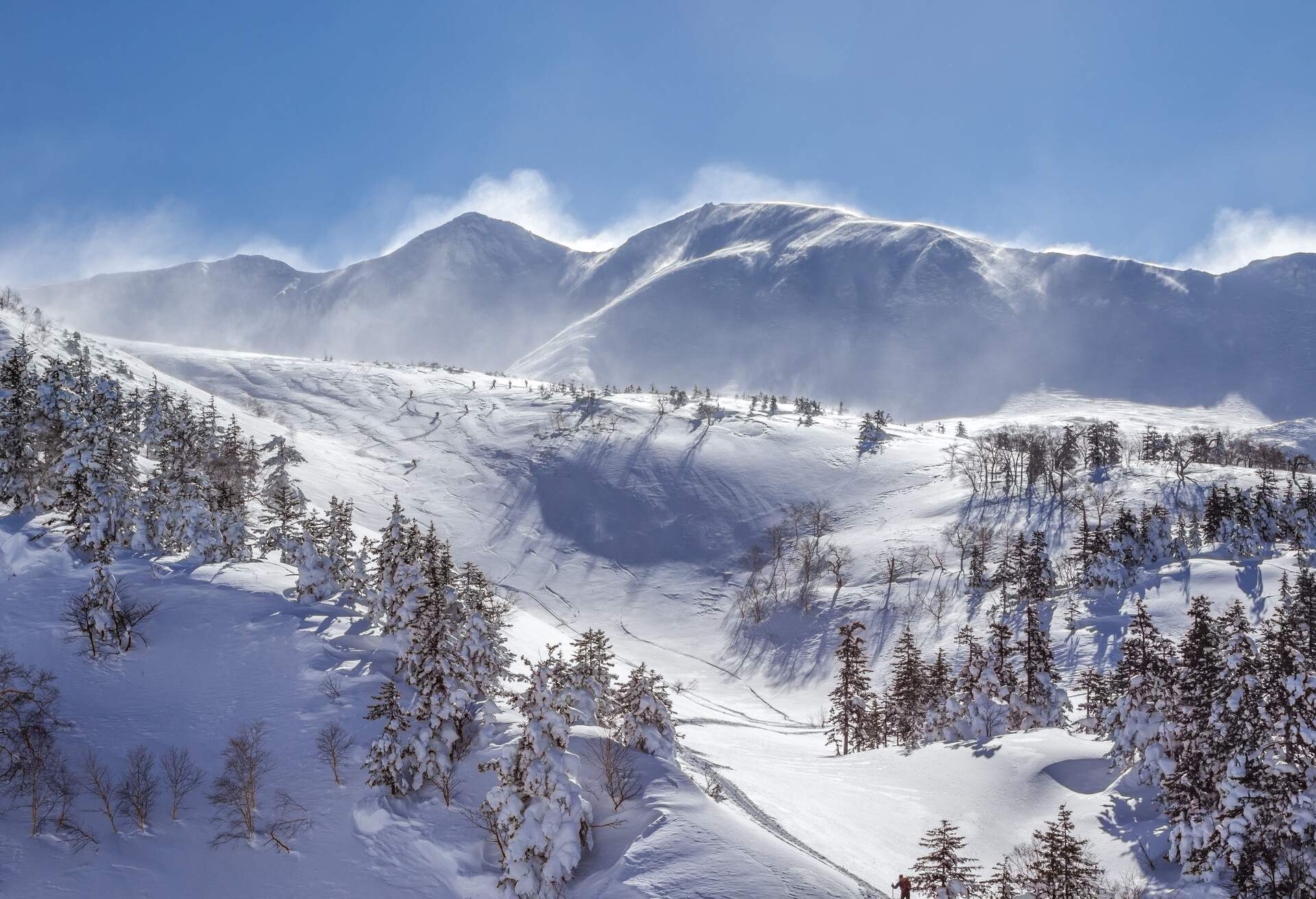
As mentioned before, there are close to 500 skiing areas throughout Japan, with various resorts in each area. One trip to Japan isn’t enough to get a full taste of the skiing possibilities it has to offer but, if you’re heading there for the first time, these are my recommendations.
1. Rusutsu Ski Resort
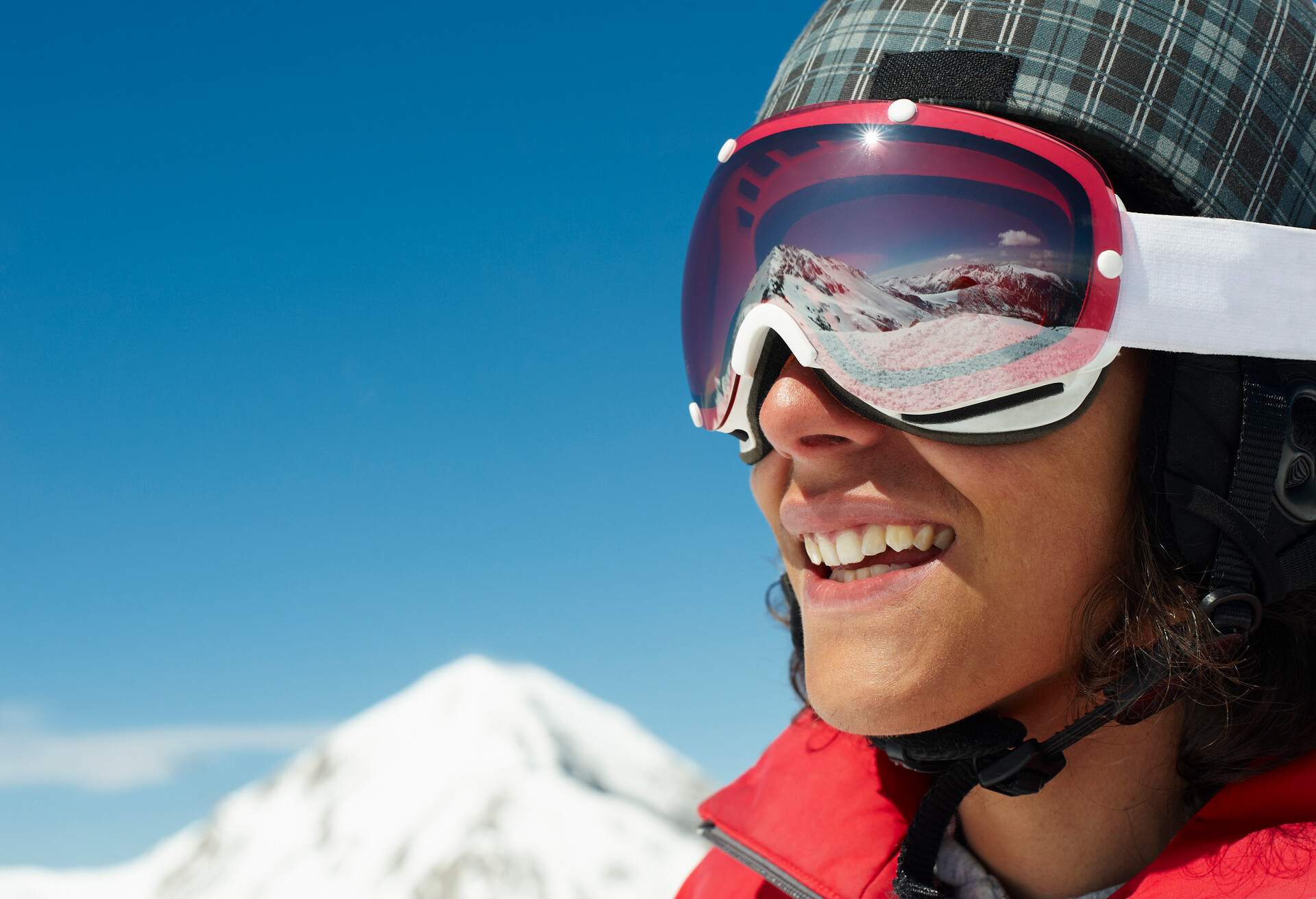
Elevation: 994 metres | Level: All levels | Family-friendly resort suited to everyone
Rusutsu Ski Resort is located in Hokkaido and is an utter gem for powder hunters of all levels, especially experienced skiers keen on tree skiing along with the amazing quality powder. Rusutsu typically has an annual snowfall of more than 12 metres and comes with off-piste and tree skiing; it provides for all levels, with a well-groomed piste for beginners that are also suited to intermediates. The most treasured part of Rusutsu Resort is the incredible fall-line tree skiing that is accessible directly from the lifts and easily traversable for boarders. The lengthy runs typically don’t have steep pitches, making it easy for boarders and those learning to ski, while the level of snow and quality of the powder makes it a joy for anyone hitting these slopes.
Rusutsu Resort Hotel is a popular choice for travellers and offers a variety of family-friendly services, as well as other activities not related to skiing. These include singing trees, a merry-go-round and dancing bears. You’ll also have access to a game arcade and a wave pool. Kids will have access to a snow park with snow biking, tubing and more. Although the nightlife activities are lacking compared to many other resorts, there are a variety of restaurants to choose from, a couple of traditional Japanese joints and one or two quiet bars in the area.
2. Niseko
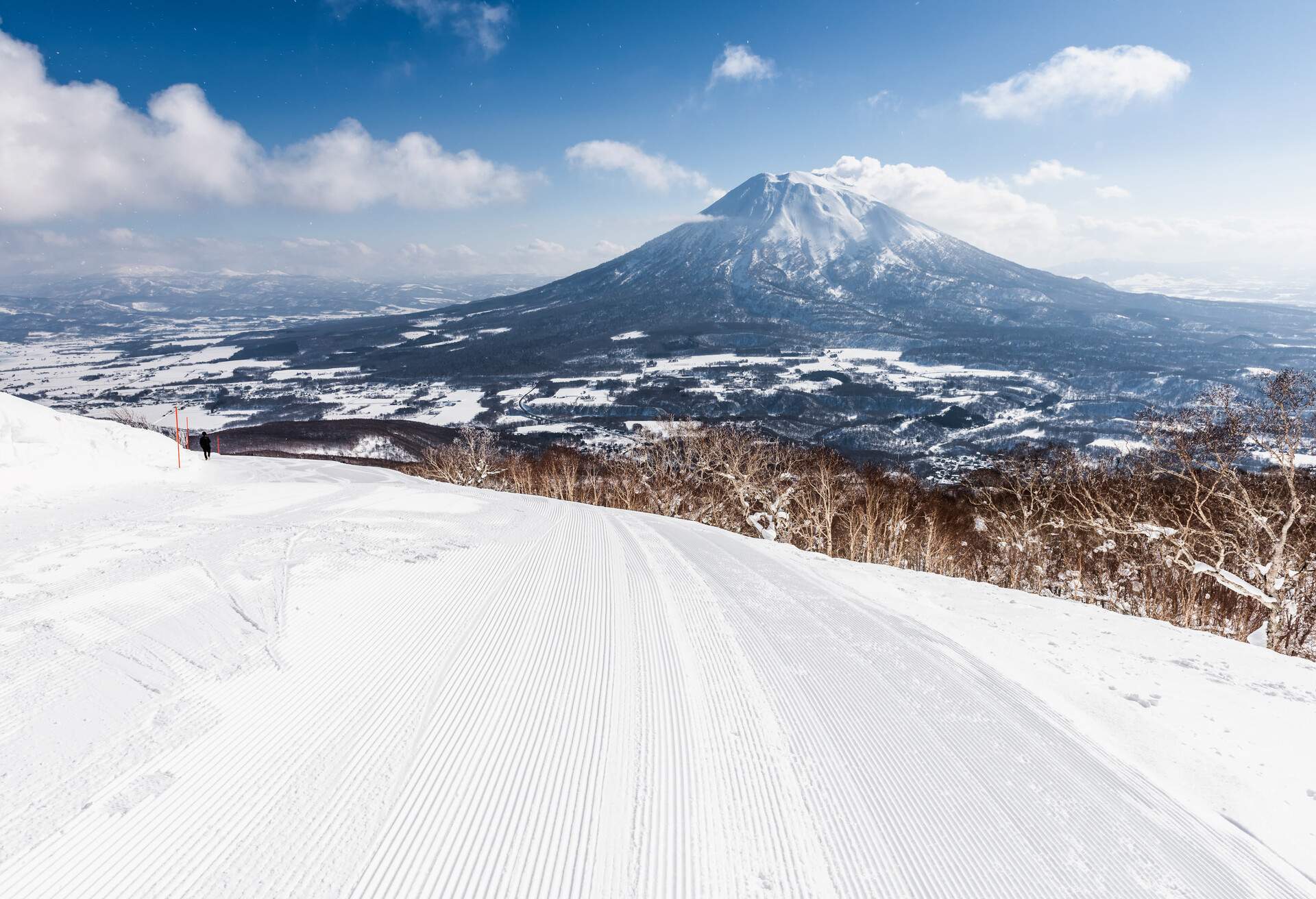
Elevation: 1,308 metres | Level: All levels | Family-friendly resort suited to everyone
Niseko is one of the best Japanese ski resorts and is considered to be the one most worth visiting out of all of the options in Japan. Another one of Hokkaido’s ski resorts, opposite Rusutsu, Niseko usually experiences close to 15 metres of snow by the end of the season, with snow covering many buildings; this makes the resort a go-to spot for most powder hounds. Niseko has been voted the best ski resort in the country numerous times at the World Ski Awards.
Outside of the impeccable slopes, one of the biggest draws of Niseko is the decadent seafood cuisine thanks to the surrounding Sea of Japan and the nearby Sea of Okhotsk. The volcanic soils on land produce very different delicacies – though just as sought after – like corn, dairy and potatoes. They also provide the ideal grazing grounds for Makkari pigs and nearby cattle that produce some of the most luxuriously marbled meat. There are four separate resorts in the area, and skiers of all levels should find just what they’re looking for at Niseko.
If you want to explore more of the Niseko area, you can organise a guided hike to Half-Moon Lake, which runs through a looming, snowy forest. You’ll have the opportunity to take some breathtaking pictures and marvel at the exquisite scenery you find yourself in. If that doesn’t cut it, find yourself a guide to take you reindeer-sledding, snow rafting or snowmobiling. When the day is said and done, you can spend your evening dining at Kamimura Restaurant, a Michelin-star spot with some of the finest cuisine you can imagine.
3. Hakuba
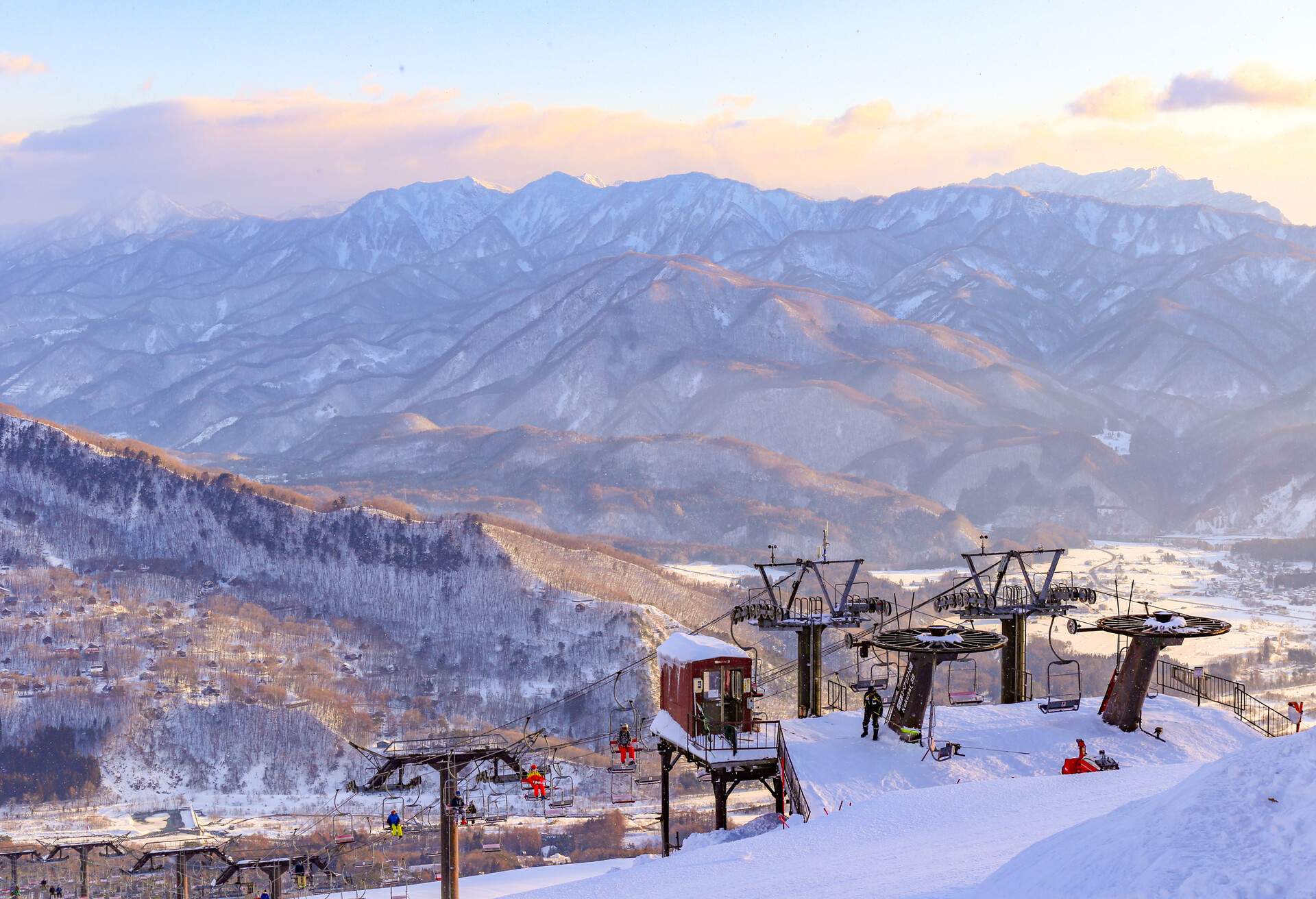
Elevation: 1,676 metres | Level: All levels | Suited to couples and adventurers
Thanks to its proximity to Tokyo, the vibrant nightlife and sensational powder conditions, Hakuba is one of the top skiing and snowboarding destinations in Asia and offers an array of resorts that cater to all levels, from beginner to expert. Of the many resorts in Hakuba, our top choice is Hakuba 47, which is linked to Goryu via its upper lifts and offers a total of 23 pistes, ranging from free-ride to long runs to freestyle runs with a better pipe. If you’re a beginner, start at the lower section of Goryu, as it offers a consistent pitch and is wide enough to be able to see everyone around you and avoid running into trouble. At the top, you’ll find a couple of red runs that can be taken at speed but are also nice and wide, so you can avoid others.
There is a champion black run at the top, which offers some incredible views of the valley below, but it’s often an icy mess and you’ll be advised against it unless you’re sure you’re at a level to take it on.
Hakuba Valley is home to two things, apart from the ski slopes, which draw thousands of visitors during the winter season. There is decadent cuisine on offer, which includes a variety from traditional Japanese-style cuisine to Western-style dishes like burgers and pizza, and all of it is delicious. The second drawing factor is onsens, or hot springs, of which there are four in the area. One of the top choices is located inside Hakuba Highland Hotel, called Tenjin No Yu; it offers beautiful views of the Japanese Alps and soothing alkaline waters.
4. Nozawa Onsen Ski Resort
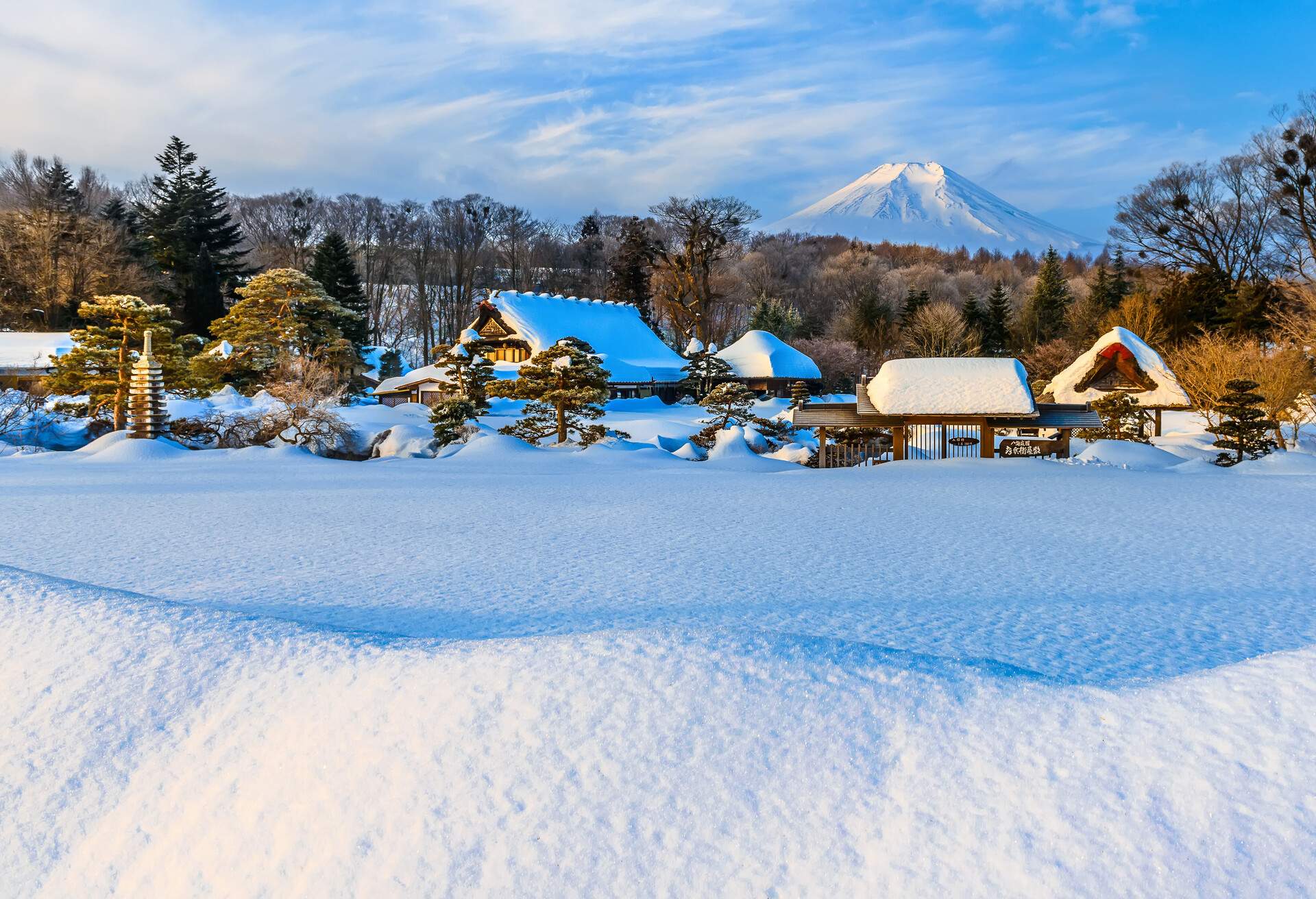
Elevation: 1,650 metres | Level: All levels | Suited to advanced skiers
Nozawa Onsen Ski Resort is located in Nozawa, which is home to some of the highest annual snowfalls on the planet; this means having access to some magical pistes and tree skiing. It’s also one of the few resorts that embrace off-piste skiing and has recently opened up a tree section at the top of the mountain, in the Yamabiko area. Around 30% of the terrain is considered advanced, but there are roughly 46 runs in total, so you’ll find a variety that caters to skiers of all levels.
Thanks to the resort encompassing various bowls and valleys, Nozawa offers a wide array of backcountry and sidecountry options for both skiers and snowboarders, though you’ll probably have to duck a few ropes to get to most of the sidecountry spots.
Nozawa isn’t only a skiing destination, it’s also teeming with local culture, decadent cuisine and world-famous hot springs. If you’re there on the 15th of January, you can experience the Nozawa Fire Festival, blending fire and snow in a spectacular fashion, where trees from the mountain are built into a shrine and set ablaze in a fire-setting-battle as an offering to the local deity.
5. Furano Ski Resort
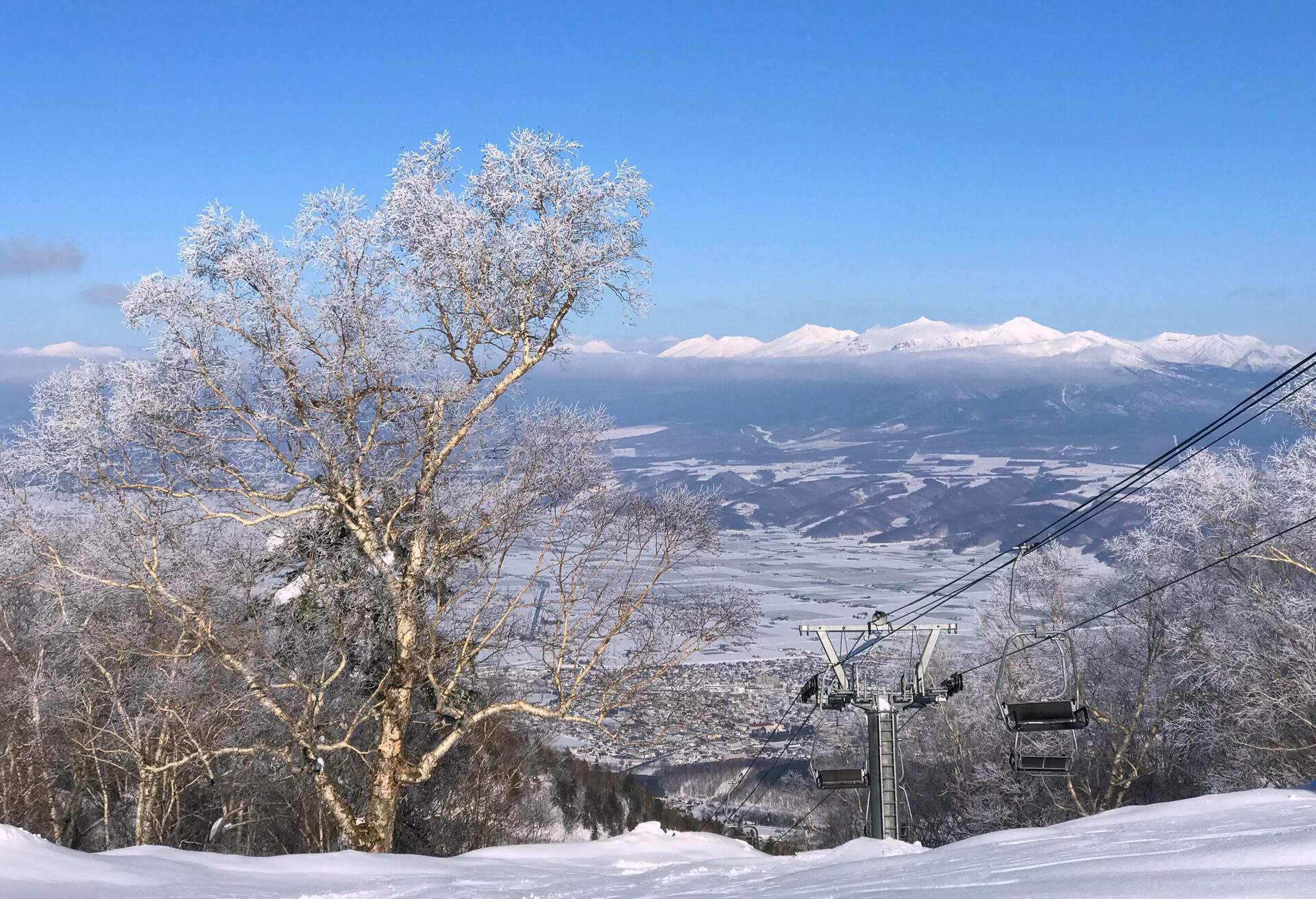
Elevation: 1,074 metres | Level: All levels | Suited to families
Furano is one of Hokkaido’s most well-known ski resorts and offers something for everyone, with around 40% of the terrain suited to beginners, 40% to intermediate skiers and 20% to advanced athletes. The town it’s located in is famous for its television dramas and flowers and offers exciting attractions throughout the year. Two connected peaks make up the resort, offering a wide range of runs, including wide, gentle slopes for novice powder hunters and long, fast runs for the more adept among you.
One of the family benefits that Furano offers is its Family Snowland, where you and the young ones can try alternative snow activities like snowmobiling and snow rafting. If you are a novice skier looking to improve your skills or your kids want to learn to thrash these hills, Furano Ski Resort offers one of the most comprehensive ski schools in the region, Furano Kimura Kosen Ski School; it offers lessons for anyone older than 13. It’s operated by an international skier named Kiminori Kimura, who’s a four-time Olympian.
6. Sapporo Teine
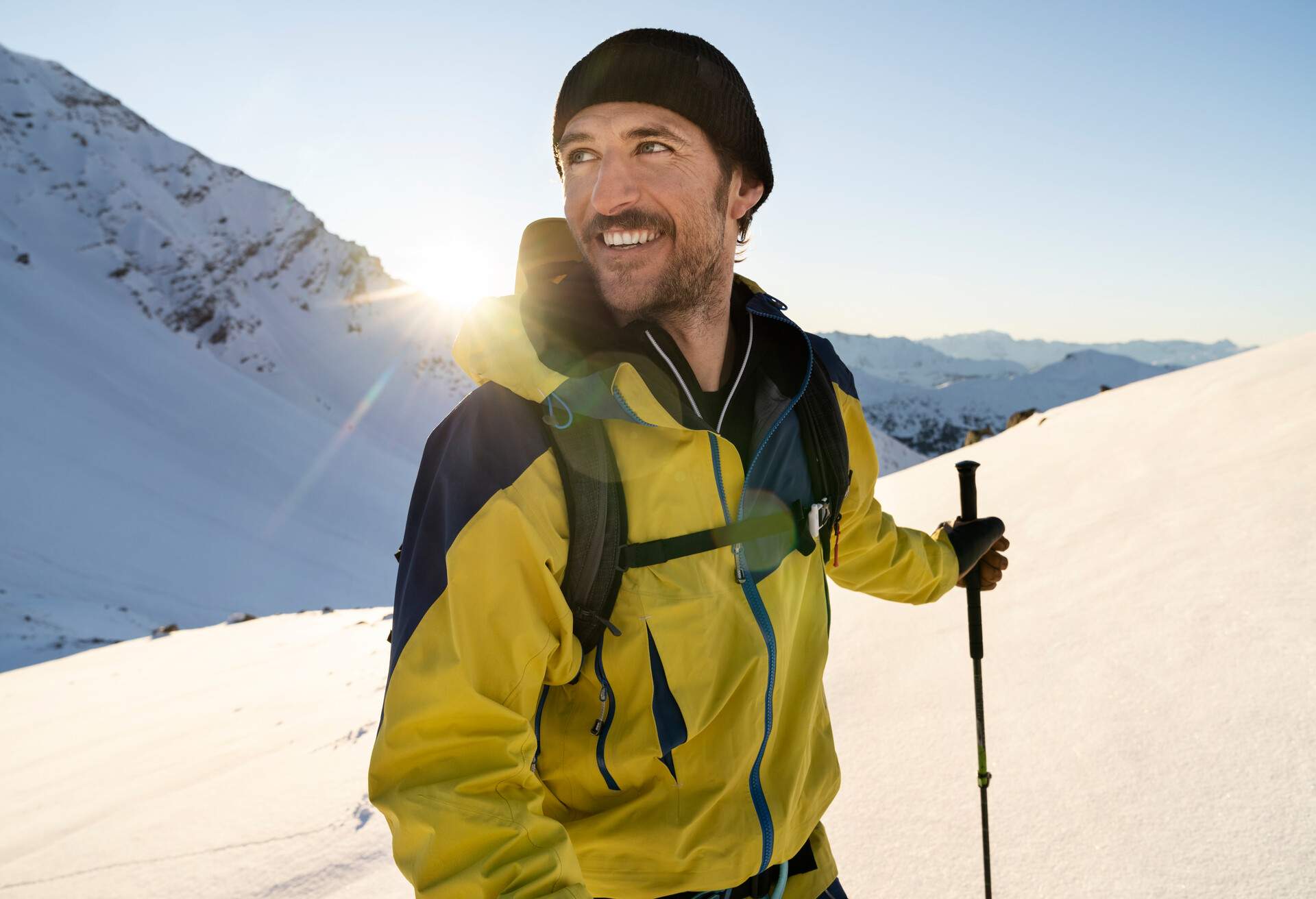
Elevation: 1,023 metres | Level: Beginner and intermediate | Suited to budget travellers
Sapporo Teine is an ideal option if you want to go skiing in Japan on a budget. It’s one of the most important and affordable ski resorts in Sapporo (and Japan), and even though it’s very well suited to beginners, it’s also home to some deep, steep and cheap powder lines that’ll get your heart racing if you’re an intermediate skier. Two small areas make up Sapporo Teine, Olympia and Highland, and each one caters to different levels. Olympia is the lower section of the slopes and geared towards beginners, while Highland is the higher section and offers runs for more established beginners and a couple suited to intermediate hunters.
The base level of both areas offers well-developed facilities, including lockers and cafeterias, and you’ll find various hire outlets offering readily-available equipment. If you’re travelling with children, Sapporo offers a kids’ park where the little ones can go sledding or tubing, and they also provide childcare facilities to kids between one and six years old.
7. Shiga Kogen
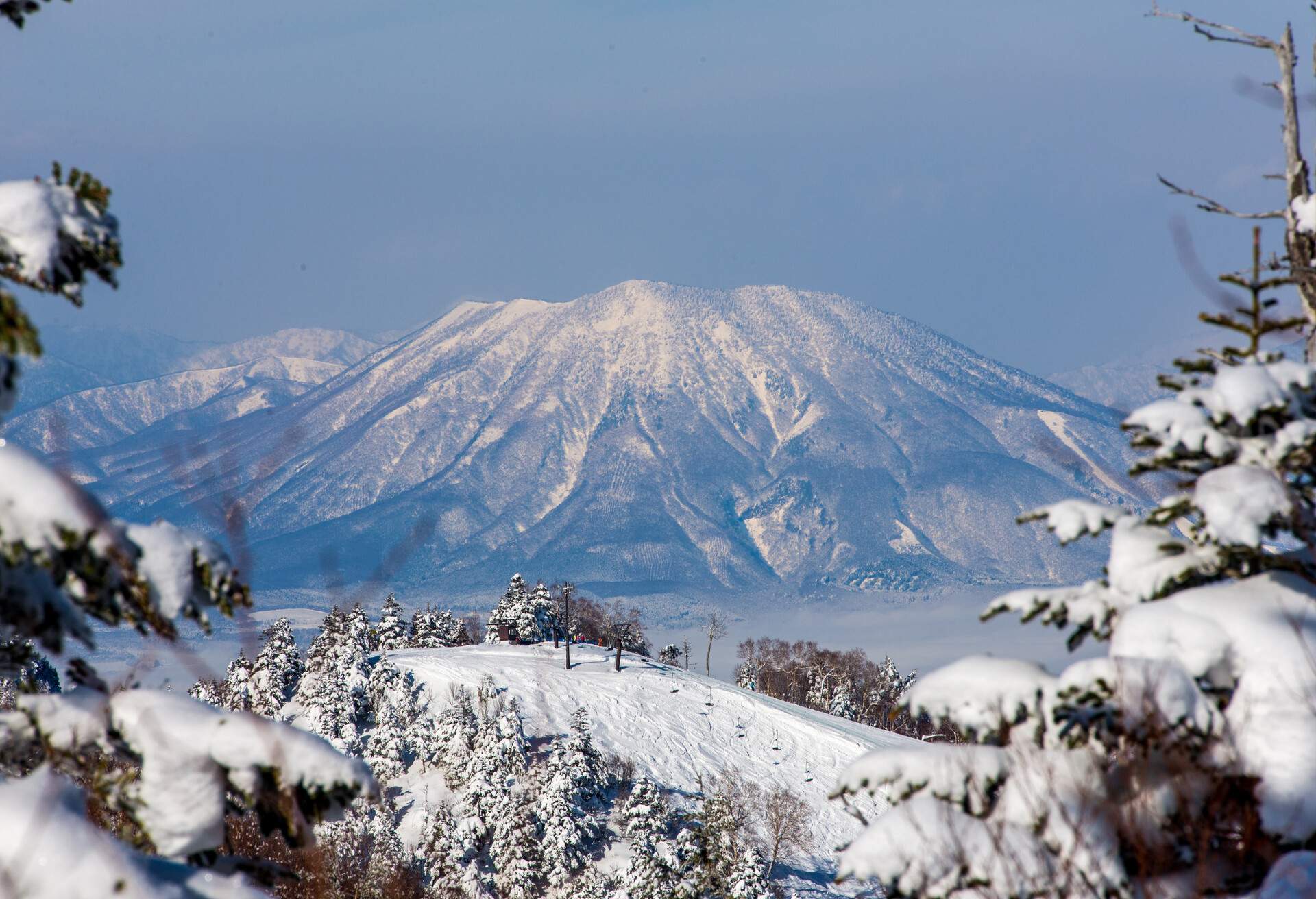
Elevation: 2,307 metres | Level: Beginner and intermediate | Minimal facilities
Shiga Kogen is the largest ski area in Japan and offers roughly 19 interlinked resorts that all converge on one lift pass. Shiga is slowly but surely establishing itself as one of the front runners when it comes to the best ski resorts in Japan, largely thanks to skiers and boarders being able to access over 600 hectares of powdery terrain, more than 1,000 metres of elevation and over 80 km of manicured and well-run piste, which can all be accessed using a single pass via about 52 lifts.
Despite there being limited facilities and dining options available, the region is popular because of its off-slope activities too. If you’re in the area and get tired of the snow, though I can’t imagine why you would, you can check out a few of the other activities on offer. Jigokudani Yaen Koen, or the Snow Monkey Park, is a famous park in the vicinity that’s home to more than 200 snow monkeys, otherwise known as Japanese macaques. Here, you can watch them frolic around without a care in the world and even bathe in the hot springs. Other than the many onsens in the area, you’ll also have access to nearby attractions like Matsushiro Kaizu Castle and Zenkoji Temple in Nagano.
Skiing in other countries
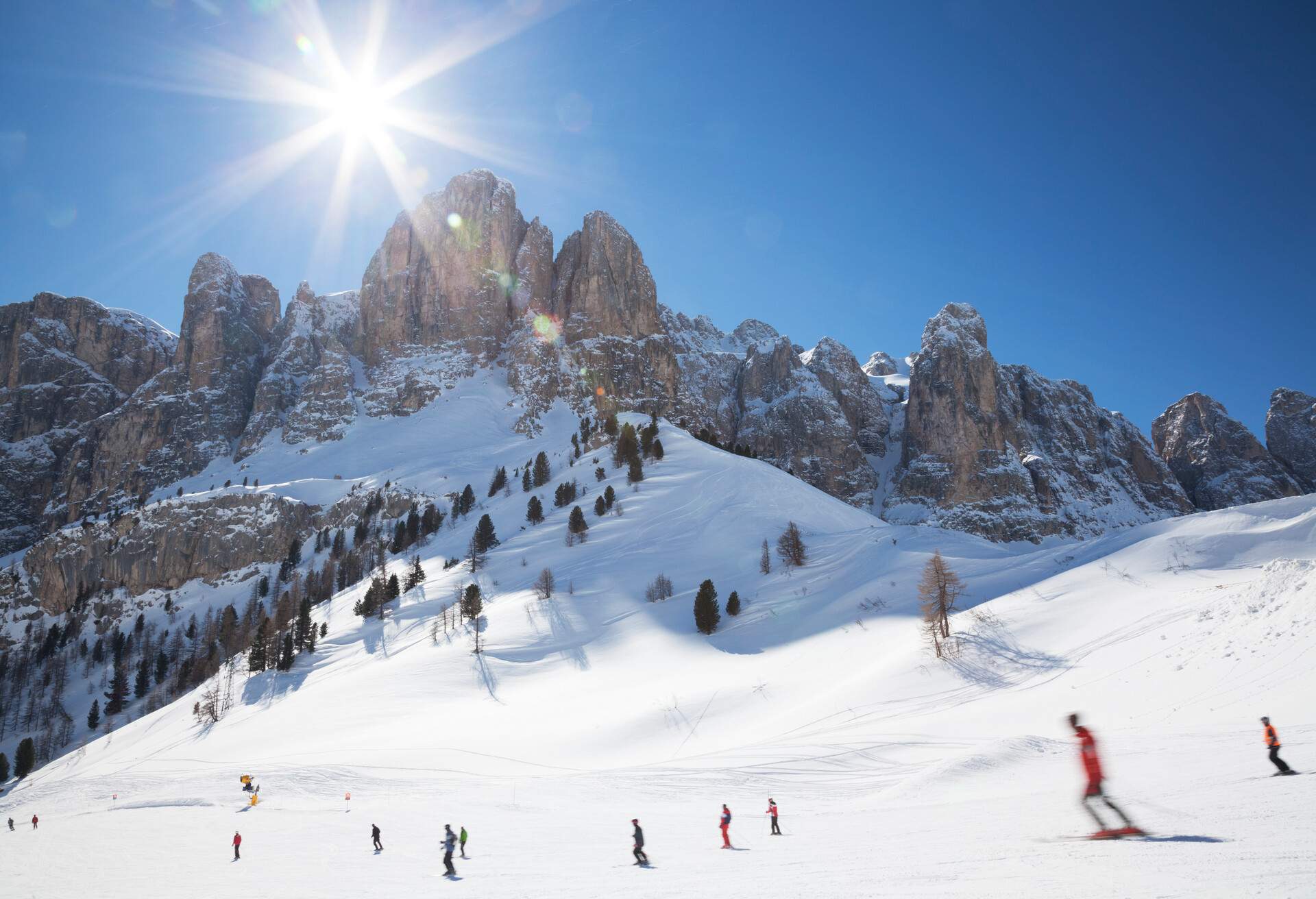
Once you’ve had a look at the slopes Japan has to offer, why not plan a trip to a few other countries and compare the offerings? You can read up on the best ski resorts in Italy, which includes the highest resorts, best resorts for families and the resorts in Northern Italy. There’s even a resort geared towards absolute beginners, which you won’t be after your Japan trip.
You can also head to one of the best ski resorts in France and experience something other than French wine and romance in the city of love. Another destination you might not expect to head to for skiing is the land down under; we have a list of the best ski resorts in Australia too, if you’d rather change things up and experience winter there.
